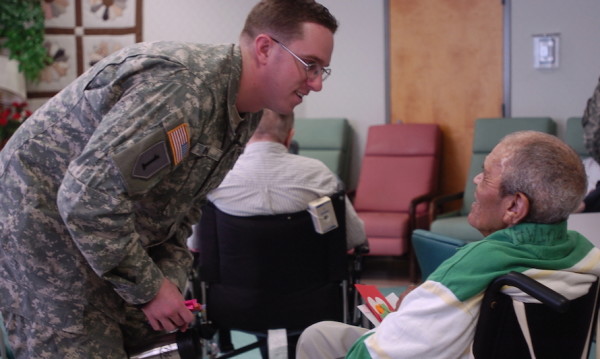

The Department of Veterans Affairs offers a relatively unknown pension benefit called “Aid & Attendance” that helps offset the cost of living for disabled veterans who can’t work, or surviving spouses who require long-term care.
The reason for designating Aid & Attendance as a pension benefit is that many veterans or their single surviving spouses can be eligible for these funds in addition to previously earned post-service pensions. It is for veterans and spouses who have disabilities that require the aid and attendance of a caregiver or are housebound.
Through this benefit, an increased monthly amount will be added to monthly pension amount when a veteran, his or her spouse, or both are confined to home because of permanent disability.
Task & Purpose previously reported on a stipend benefit for caregivers of Post-9/11 disabled veterans — the Caregiver Support program — but the Aid & Attendance benefit is more inclusive of veterans from all conflicts.
Those wishing to be approved for Aid & Attendance may have one or more issues including requiring the aid of another person in order to perform personal functions required in everyday living, being bedridden, residing in a nursing home due to mental or physical incapacity, or having eyesight that is limited to a corrected 5/200 visual acuity or less in both eyes or concentric contraction of the visual field to five degrees or less.
In order to determine eligibility, veterans, their spouses, or caregivers can contact their in-state Pension Management Center, which will then evaluate the situation and determine the additional pension amount that is available. Often the local VA in charge will require a thorough physician-performed assessment of the veteran or spouse’s disability, and how it impacts daily life.
The money can be used to pay for a number of things, including in-home care, assisted living, nursing home care, medical expenses, or prescriptions.
The original VA pension program was established in 1952, and provides a tax-free monthly income of $1,949 for a veteran and a spouse, $1,644 for a single veteran, $1,056 for a single surviving spouse, or $1,291 for a healthy veteran whose spouse requires care. In terms of annual income, couples can receive roughly $25,000 a year while surviving spouses of veterans are eligible to receive up to $13,560.
Veterans eligible for pension programs must have served 90 days on active duty, with one of those occurring during wartime. They must also received a discharge that is other than “dishonorable.”
Overall, the addition of the Aid & Attendance pension can offset a significant portion of long-term care costs associated with permanent disability.
